Saving Paul Conrad’s ‘Chain Reaction’
For the past 22 years, the city of Santa Monica has had one of the most significant public political artworks in the nation, installed adjacent to the Santa Monica Civic Center in the tourism hub of this beachside town.For the past 22 years, the city of Santa Monica has had one of the most significant public political artworks in the nation.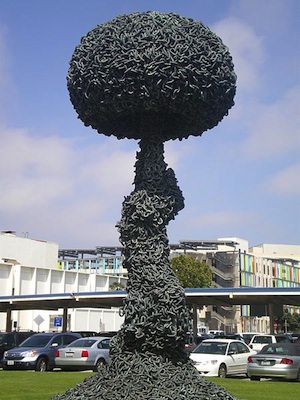
For the past 22 years, the city of Santa Monica has had one of the most significant public political artworks in the nation, installed adjacent to the Santa Monica Civic Center in the tourism hub of this beachside town. This 26-foot tall sculpture by the late renowned artist and cartoonist Paul Conrad depicts a chain-linked mushroom cloud and serves as a powerful warning about the continuing dangers of nuclear war. As a public artwork, the sculpture invites discourse and commentary and is available to thousands of viewers who might pass by. Officially designated a landmark, the sculpture needs repair and conservation — a reality for all public artworks, but one with special challenges for a large three-dimensional work like this.
For whatever reason, Santa Monica has placed the burden for the costs of these repairs on private donors, setting a deadline of Feb 1, 2014. Fundraising and political efforts are underway to save the sculpture and many people, including prominent artists, journalists and political leaders, have lined up in support. Many residents from Santa Monica and neighboring communities have noted their passionate desire to save “Chain Reaction.”
There are many reasons why this sculpture must be preserved in its present location. The Save Chain Reaction Project has brought many of these reasons to public attention and as the February deadline looms closer, the controversy will inevitably become more visible throughout Southern California and even throughout the nation. A key argument is the art historical case for preservation, which links “Chain Reaction” to the broader tradition of public political artwork in America and locates the reputation of Paul Conrad as a major figure of late 20th and early 21th century contemporary art.
The U.S. (and the world) has an extensive tradition of public political sculptures. Many are commemorative works that invite audiences to reflect on tragic and traumatic episodes and events. Common themes are slavery and emancipation, the Holocaust, war and peace, the Armenian genocide, the Hollywood blacklist, and the gay and lesbian struggle. Many three dimensional works also commemorate specific atrocities such as the Amistad Slave Rebellion in 1839, the Haymarket martyrs execution in 1887, the 1941 Japanese Pearl Harbor bombing and the Sept. 11, 2001, terrorist attacks.
Other progressive sculptures bring public attention to major public figures whose lives were spent working for social justice. Works about icons such as Sojourner Truth, Eleanor Roosevelt, Dr. Martin Luther King Jr., Cesar Chavez, A. Philip Randolph and Medgar Evers, often created by acclaimed artists such as Elizabeth Catlett, Ed Hamilton, Tina Allen, Judy Baca and Charles Dickson, have graced American public spaces.
Four especially accomplished public sculptors provide the specific art historical context for a fuller understanding of Conrad’s strikingly provocative work in Santa Monica. Their political visions, their willingness to provoke public controversy, their dedication to resist conservative opposition to their efforts, and their exceptionally high artistic standards make them stand out among their contemporaries. One of the early 20th century “peace” artists was San Francisco-based Beniamino (Benny) Bufano (c.1890-1970). Like Conrad, Bufano was always politically contentious, using his artwork as a force for social criticism and change. Having lived through the bloodiest wars of the 20th century, he used his art to call attention to the pressing need to end war, especially in the nuclear age.
Two of his public sculptural works are direct art history predecessors to “Chain Reaction.” For almost 40 years, “Peace” stood at the entrance to the San Francisco International Airport, where millions of people could see it, at least briefly. It is now located at Brotherhood Way, near several places of worship. At its base, “Peace” has an inscription that reinforces its central message: “Presented to the Citizens of San Francisco by the San Francisco Chronicle. Dedicated to the Brotherhood of Man and the Ideal of Peace Among all the Peoples of the World.”
In 1968, Bufano created “St. Francis of the Guns,” a large figure of the Catholic saint decorated with the heads of four assassinated leaders: Abraham Lincoln, Martin Luther King Jr., John Kennedy and Robert Kennedy, revealing the dangers of the American cult of guns and violence. As part of his materials, Bufano used melted metal from a San Francisco voluntary gun turn-in program.
George Segal (1924-2000) also produced powerful public sculptures that help provide the art historical background for Conrad’s Santa Monica effort. “Abraham and Isaac” commemorated the students who were injured and killed at Kent State by the Ohio National Guard in 1970 when they protested American military involvement in Southeast Asia. Kent State rejected the work, but Princeton University accepted it and contemporary audiences there could reflect on the continuing implications of government repression against political dissenters in America through this brilliant artwork.
Segal’s most provocative public sculpture was “Gay Liberation,” the first major artwork to commemorate that struggle. Its depiction of gay male and female couples caused considerable controversy. It was regularly vandalized after it was installed on the Stanford University campus. It was moved to Madison, Wis., and finally across the street from the Stonewall Inn in New York, the site of the famous gay rebellion in 1969. Segal’s sculpture invites audiences to consider deeper issues of human dignity and sexual orientation. In the process, like Conrad, he used his art to bring a major and controversial social issue to public attention.
Luis Jimenez (1940-2006) was an imaginative public sculptor who performed the same function with his large fiberglass works dealing with Latino and immigration themes. But in one of his early works from 1969, “Man on Fire,” he depicted a burning man who was modeled on the Buddhist monks in Vietnam who burned themselves to death to protest the war in that land. Jimenez’s sculpture got inspiration from the Aztec emperor Cuauhtemoc, who was tortured by the Spanish conquistadores.
His 1989 “Border Crossing” portrays a man carrying his family on his shoulders while traversing the Rio Grande into the United States — an all too familiar story for millions of undocumented people in America. Jimenez’s sculpture invites serious consideration of one of the most pressing human issues a quarter century after its creation. Like all outstanding works of political art, this effort demands an active response, countering the social indifference that much of contemporary art generates, especially with its elite audiences.
Probably the most notable public sculptor working in the United States presently is Maya Lin (1959- ). The creator of the Vietnam Veterans Memorial Wall in Washington, D.C., Lin won the commission as a 21-year-old student at Yale in 1981. This work is a magnificent V-shaped granite effort that contains the names of more than 58,000 fallen soldiers in America’s most foolish and costly military adventure. It allows families and friends of the dead as well as opponents of the war to stand in the same space, to grieve for the unspeakable loss of life. Anyone who has visited this monument has experienced its power and its capacity to generate both serious thoughts and enduring emotions.
Lin has created an impressive body of work beyond the Vietnam Wall. Her “Civil Rights Memorial” in Montgomery, Ala., in 1989 and her “Woman’s Table” at Yale in 1996 invite audiences to reflect on the struggles of African-Americans and women for full equality in American life and society. These works and others likewise set the broader context to understand the deeper educational value of Conrad’s “Chain Reaction.”
The other aspect to consider is Conrad’s artistic quality and reputation. He was the pre-eminent political cartoonist of his era; in the entire history of this medium, he remains a truly giant figure and it is reasonable to place him in the front rank of the world’s political cartoonists from the 19th century to the present. Most political cartoonists, however pungent and critical, seldom transcend their own time and place. In very few cases, their artistic brilliance allows them to simultaneously comment on their own times and make more timeless observations with relevance far beyond their specific targets. In the U.S., the finest examples include Thomas Nast; some of the early 20th century cartoonists from “The Masses,” like John Sloan, George Bellows and Robert Minor, Bill Mauldin and Herbert Block (better known as Herblock).
The most obvious comparison is with the great French artist/cartoonist Honore Daumier (1808-1879). His savage cartoons about King Louis-Philippe and other reactionary politicians after the July 1830 revolution can be viewed fruitfully today and compared to their equally reactionary American counterparts of the early 21st century. Likewise, Conrad’s acerbic treatment of Richard Nixon, Ronald Reagan, William Rehnquist, Clarence Thomas and many others will endure for decades into the future, long after these men and their retrograde ideas and polices have (one hopes) faded into obscurity.
Daumier was also an accomplished sculptor (and painter), adding a huge dimension to his overall artistic stature. His political sculptures often caricatured the “leaders” of his era, but they are exquisitely applicable to the present. When I take students in my honors course on political art at UCLA to the Armand Hammer Museum to see Daumier’s cartoons, I also show them his sculptures, inviting them to see their contemporary significance and implications.
Conrad is a staple in that same course, a major figure in my survey on modern/contemporary social commentary in the visual arts. I deliberately compare Daumier’s work with his and I also bring students’ attention to “Chain Reaction,” while revealing that Conrad too was both a cartoonist and political sculptor. And I am pleased to add that during his lifetime, Conrad gracefully (and colorfully) spoke to my students about his life and work.
Whatever the authorities in Santa Monica decide to do with “Chain Reaction,” they must be totally cognizant of the long art historical tradition from which it emerges. Knowledge of that tradition should go a long way in convincing them, and the residents of the community in general, of the scholarly importance of this public sculpture. It is one of the many reasons why it must be preserved and repaired in its present location.
Your support matters…Independent journalism is under threat and overshadowed by heavily funded mainstream media.
You can help level the playing field. Become a member.
Your tax-deductible contribution keeps us digging beneath the headlines to give you thought-provoking, investigative reporting and analysis that unearths what's really happening- without compromise.
Give today to support our courageous, independent journalists.
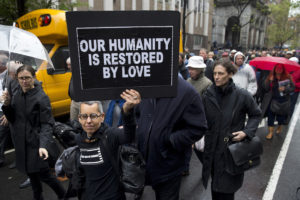
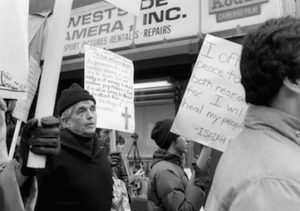
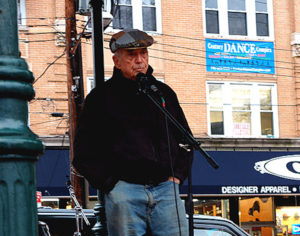
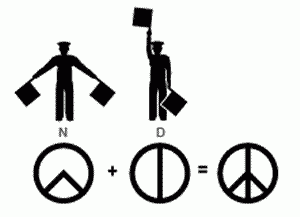
You need to be a supporter to comment.
There are currently no responses to this article.
Be the first to respond.